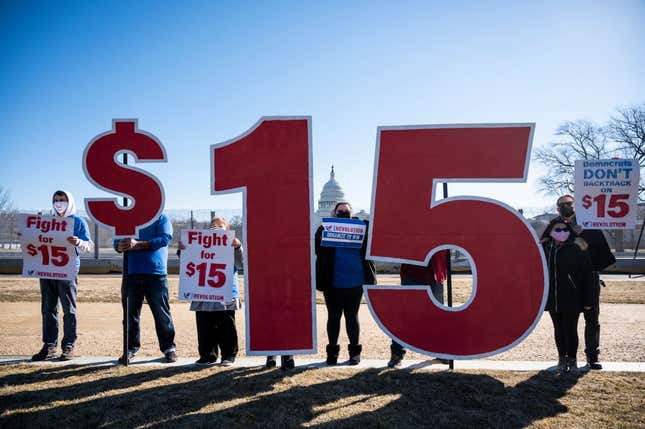
American’s minimum wage set by the Fair Labor Standards Act is $7.25–which hasn’t been changed since 2009. Twenty-six states have increased rates through state legislation, but action on a national level is still needed.
Axios reported that high-income earners have become more stressed about the economy, but it’s those making lower wages who are feeling the brunt of inflation hitting 7.9%. Oxfam America, a global nonprofit, recently conducted a study , showing just how dire circumstances are for those living on the edge of poverty, according to The Hill. The research found more than 32 percent of the U.S. labor force, or 51.9 million workers, currently make less than $15 per hour.
With Oxfam’s findings, there’s a clear indication that more demographics are affected by this than others–women, single mothers, and people of color, in particular.
There are clear demographic patterns among low wage earners, as Oxfam found 40 percent of women, about 31 million people, earn less than $15 per hour. That percentage jumps up to 50 percent when accounting for women of color. At the same time, 25 percent of men earn less than $15.
When looking at wages by race, 46 percent of Hispanic/Latinx workers earn less than $15 per hour while 47 percent of Black workers also earn less than $15 per hour. Comparatively, 26 percent of white workers earn less than $15.
Among single parents, 57 percent, about 11.2 million people, also earn less than $15 per hour.
Oxfam noted that despite Fair Labor Standards Act (FLSA), professions like farmworkers, domestic workers and restaurant workers don’t qualify because their salaries are usually below minimum wage. Congress would amend the FLSA to offer restaurant workers a subminimum “tipped wage,’’ which counts on patrons to tip workers to make up for the difference in hourly wages. These types of jobs largely held by women and disproportionately by women of color, Oxfam points out.
In January, President Biden signed an executive order raising the minimum wage for federal workers and contractors to $15. However, measures to assist all workers across the country met roadblocks. The Raise the Wage Act in 2019, an effort to increase the minimum wage to $15 by 2025, passed in the House, but was blocked by the Republican-controlled Senate.
The bill was again reintroduced in January 2021 and an amendment was even added to President Biden’s $1.9 trillion American Recovery Plan Act. Unfortunately, the bid was defeated again in the Senate by a vote of 42-58 after Senate parliamentarian ruled the raise complied with budget rules.

